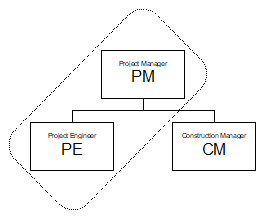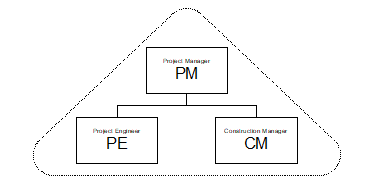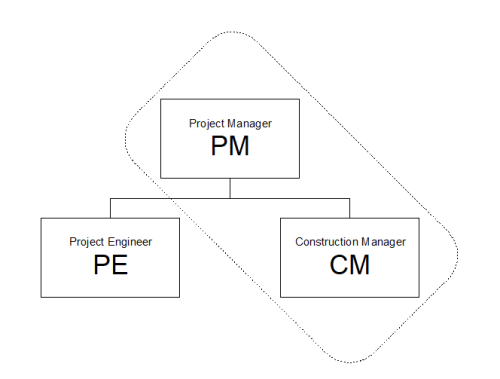Purpose
Project delivery is the process of taking the Client’s proposed project from initial conception through design, construction and closeout. Project Managers have an extremely important role in the delivery of projects for the Bureau of Engineering. They are responsible for working with clients to define the need for projects and for providing information required for the City and community to make decisions as to the viability of a project or group of projects. They must also assume responsibility for developing funding strategies, developing a work breakdown structure for project delivery, assembling the team that will complete each project, developing schedules for completion, ensuring completion within established timeframes and within budget requirements, and many more responsibilities detailed throughout this Manual.
The Project Delivery Manual (PDM) is used by every program in BOE to successfully deliver construction projects from pre-design through post construction. The PDM provides detailed project delivery policies and procedures that BOE staff must follow throughout the life of the project. Project Managers must obtain approval from the Program Manager and the Deputy City Engineer for the program (Organization Chart can be found at this link: https://engineering.lacity.gov/about-us/organization) to deviate from PDM policies and procedures. Written approval must be received on the PDM Procedure Deviation Authorization Form (Attachment 1.1-1). The PDM Procedure Deviation Authorization Form is used by the Program Manager and the Deputy City Engineer to determine whether the proposed deviations to PDM procedures are necessary for the project.
REFERENCES
N/A
RESPONSIBILITIES
Project Manager (PM): The Project Manager is responsible for delivering a specific project. The PM is the focal point for all issues related to the assigned project. Typically, the Project Manager will remain in this same role throughout the project, from inception until completion.
Project Engineer (PE): If designated by the Project Manager, the Project Engineer is responsible for all technical aspects of the project (as opposed to administrative aspects). Depending on the resources allocated by the Program Manager, the PE’s typical responsibilities include assembling the plans and specifications; coordinating interface between technical disciplines; internal plan checking; value engineering; and coordination of external plan checking, permits, etc. For occupied facilities, bridges and street work, and sewers and storm drain work, the PE is typically an architect, structural engineer or civil engineer, respectively. The Project Engineer shall assemble the documents for each discipline and insure they are coordinated.
Construction Manager (CM): The Construction Manager is responsible for administering the plans and specifications and interfacing with the Contractor and Inspector. The CM also coordinates the project needs with the Project Engineer, as required.
Program Manager: The Program Manager is a senior manager who is responsible for overseeing a major series of related projects (a program). The Program Manager supports the Project Manager in staffing the project and obtaining required resources.
Functional Manager (Group Manager, Division Manager or Division Engineer): Functional Managers each oversee all aspects of a specific technical discipline for the Bureau of Engineering. Some examples of Functional Managers are Division Managers of the Architectural, Structural Engineering, Survey, and Geotechnical Engineering Divisions. Other Functional Managers may be part of a Division, such as lead engineers for electrical, mechanical, or instrumentation and control specialties.
Program Control Engineer (PCE): The Program Control Engineer is responsible for assisting the Program Manager and Project Managers in using and maintaining the Uniform Project Reporting System (UPRS); in preparing the required financial and program status reports; and in providing training and assistance in the routine operation and maintenance of UPRS for the program. PCEs are stationed in various program offices, and work closely with the staff in Project Award and Control Division (PAC). The Program Control Engineer uses UPRS to produce the following items: the Work Plan Resource Requirement (WPRR), Capital Improvement Program (CIP), Master Schedule, Construction Expenditure Chart, Revenue and Expenditure report, and Performance Indicator charts.
Designers, Engineers, and Architects: These are staff-level engineers and architects who support the Project Engineer and Construction Manager as members of the Design Team and Construction Team.
PROCEDURE
The Bureau’s Project Management philosophy for delivering projects is based upon three key positions—the Project Manager (PM), the Project Engineer (PE) and the Construction Manager (CM), as depicted below in Figure 1.1-1.

Within this structure, the Project Manager has total responsibility to see that a project is completed within budget, on time, and at the specified quality; however, the Project Manager is not responsible for specific activities required to produce the finished product. These responsibilities remain with the Project Engineer and the Construction Manager (who may choose to delegate specific tasks to individual Design or Construction Team members). For example, while the Project Manager is responsible for overall completion of the project, the Project Engineer is responsible for producing and updating the project plans and specifications, and the Construction Manager is responsible for managing the construction process and interfacing with the Contractor and Inspector.
Not all projects within the Bureau of Engineering are large or complex enough to warrant three separate individual positions to deliver the project. In such cases, the Project Manager may, depending on his/her expertise, also act as either the Project Engineer or the Construction Manager. These two management structures are depicted below in Figures 1.1-2 and 1.1-3.

The Project Manager may even act as both the Project Engineer and Construction Manager, as depicted below in Figure 1.1-4.

This Manual is intended to describe the environment and the manner in which Project Managers operate to deliver their projects, as well as the individual roles and responsibilities of other important members of the Project Delivery Team. The overall responsibilities of the Project Manager, Project Engineer, and Construction Manager, as well as other key Team members, are defined further in this Procedure.
While this Manual focuses on the way that projects are delivered in the Department of Public Works, Bureau of Engineering, many of the principles described herein are applicable to the delivery of public works and public works building projects in any organization. This Manual is generally organized by describing in depth the five phases of project delivery, as defined by the Bureau of Engineering. These phases are Pre-Design, Design, Bid and Award, Construction, and Post-Construction, and are described in detail in Procedure 1.2 of this Manual.

Comments